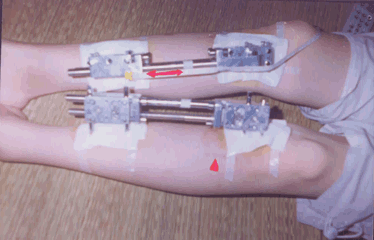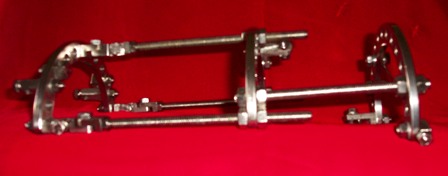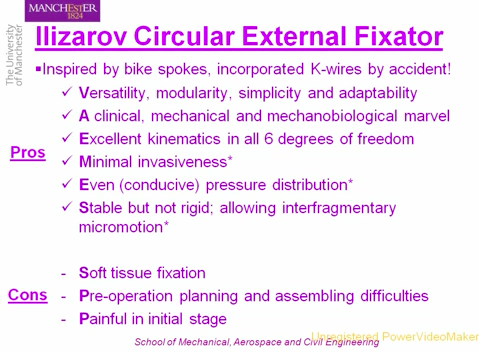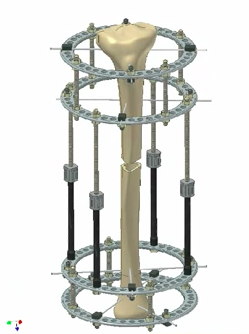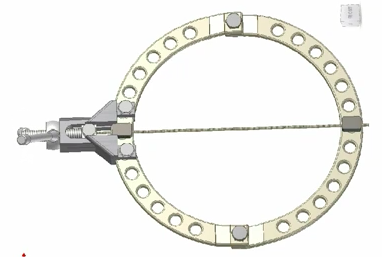These days I am doing a lot of reading and research on sky’s old easyheight website and seeing what his methods were. Overall, I am starting to understand his approach and idea.
Sky was trying to use exercise and stretching methods to lengthen either the backbone/ lumbar area, the thigh bone, or the shin bone. He started the testing and work around 2003 and the site was around until 2011. He did not gain anything in terms of extra height. For all his passion, enthusiam, and belief, he didn’t grow taller. Why?
Here is my most educated guess. He was trying to increase his height using only exercise and stretching.
The big problem with Sky’s approach is that ever since humans evolved to the species that they are now, there has been estimated that there are over 100,000,000,000 humans. Of that 100 billion, that spans a time range of about 5 million years. In those 5 million years, there have been obviously many people who were “short” or have been considered short within the society they grew up and raised in. All these people probably wished at some point to be able to increase their height at some point.
Many of them when they were younger would have probably tried to increase their height using some “common sense” exercises. The biggest ideas are stretching, pulling the long bones, using gravity as a downward force like using inversion tables and hanging on a bar (even Michael Jordan did that). For the average person, not a real medical professional, those exercises seem reasonable in that they might be able to help increase height a little. The truth is that those exercises will increase height at least a little, but the increase is only temporary.
And throughout the 5 million years people have existed, not one person or group of people have found one method to be able to increase in height, at least through the ordinary exercise way. That was sky’s mistake. Why did he think he could discover a way to make the long bones elongate when so many other people before him couldn’t.
Let’s look at some of the most barbaric and tough civilizations that have existed.
1. Spartans- this society existed in creating super soldiers. Anything that resulted in stronger, bigger, and better fighting warriors was prized. They used to throw newly born babies down a cliff if the baby did not look healthy. This civilization would have trained their men and soldiers insanely hard to grow stronger. Even a person of average intelligence could ahve guessed that they probably also tried experiments to see if they could make their people taller too, for itimidation and war reasons. They failed to make their soldiers taller through all the training and exercises.
2. Aztecs- this civilization has gained a lot of infamy for taking slaves and war captures and sacrificing them by cutting out their hearts. The civilization was very brutal in the treatment of their bodies. I would guess that these people tried also to possibly grow taller from manipulating their bodies. THey were also a rather violent group of people who was almost always as war with other tribes. Being taller would have helped them look more intimidating and given them more of an advantage in battles. The failed to make their people bigger.
3. Japanese- During the 20th century the Japanese went into world war against the allied nations. If you have ever watched the old documentaries you coudl see that the young japanese children were forced to learn calisthenics, martial arts, stretch, and gymnastics to make their bodies taller and stronger so that they can be sent to the fornt lines and fight the othe nations. The Japanese knew during those times that they were much shorter than some other nations, especially the Americans who were the tallest nation during the 30s and 40s, and they were trying to get their young children to do exercises to match the height and size of the Americans they were fighting against. They never succeeded in creating a program to actually make the kids taller.
4. Chinese martists artists – In China’s 3000 year old tradition there has been thousands if not millions of martial arts experts, masters, etc. If you would guess anyone had better understanding of their own bodies and how to possibly grow taller, you would guess these types of people would have the best chance. So far, I have not heard of one martial arts master or ancient mythical fighter who was able to grow taller using some secret hidden technique they learned from a system of fighting. No one succeeded
5. Soviet scientists – The soviets were very famous for trying all sorts of bizzarre experiments on their own people to test the limits of what the human body was capable of. They used their own soldiers to take mind altering drugs and try out ancient meditation practices to see fi their military can learn to harness the old claims of ESP and psionic powers. It was one of these soviet scientists name Ilizarov through testing children and adult through brutal and painful experiments that discovered the world’s first real way to lengthen bones which gave us a real height increasing technique. Those types of experiments Ilizarov did to create his device would have never been allowed by the American medical community for how brutal and inhumane they treated their human patients and test subjects. Today, that type of human body experimentation would have been completely outlawed and he would be thrown in jail. I am almost positive that the Soviets also took their most brilliant of anatomists and asked them to look for ways to make their soldiers and people taller, again to show to the Americans that their way of thinking and society, running on the Communist ideas was better than the capitalist ways. Again, these brilliant soviet scientists could not find a way to increase the human height, at least just from exercise routines. One of them did succeed however in building a device with coupled with bone distraction surgery can increase a person’s height.
6. Chinese scientists – Like the soviets, the chinese scientists would have also tried at some point to try to develop some system to make their countrymen’s height increase. We have no idea what type of biological or chemiscal testing is being done by the chinese government right now. They could be testing on subjects for psionic and ESP powers just like the soviets did 40 years ago. They could also be testing exercise and surgical methods on subjects to try to make people taller too. So far, nothing in the chinese news have stated anything of big breakthroughs on the science of height increase yet.
My entire point from all these examples is to show that the way Sky was approaching the problem was exactly the same way billions of people before him who desired to achieve height increase also did. He thought a simple easy form of exercise routine which focused on tensile loading of the human leg long bones would be able to stretch the body out. Did sky realize that the human femur has a maximum tensile strength of 150 MPa? That strength of femur cortical bone is just at strong as steel. That’s right, steel!! It would make no sense that a person who can barely exert 500 lb/in^2 of power or even be able to rip up a phone book can possibly be able to use 30 lb ankle weights from repetitive kicking allow the bones of such high tensile strength to create enough microfractures to cause elongation.
Sky’s approach was wrong. We have seen that people from the past who were more dedicated than us, with more intelligence, more education, more time to do experiments and test on real humans, and more resources all fail in their endeavor to increase people’s height. Not one civilization in human history has been able to create a way to grow taller until the soviets through experimentation did create the ilizarov device, but they still had to use surgery and cut the bones in half first. There was no way sky using the small loads and the low rates that he did could have succeeded.


 t
t –
–
 k
k n
n n)
n)
